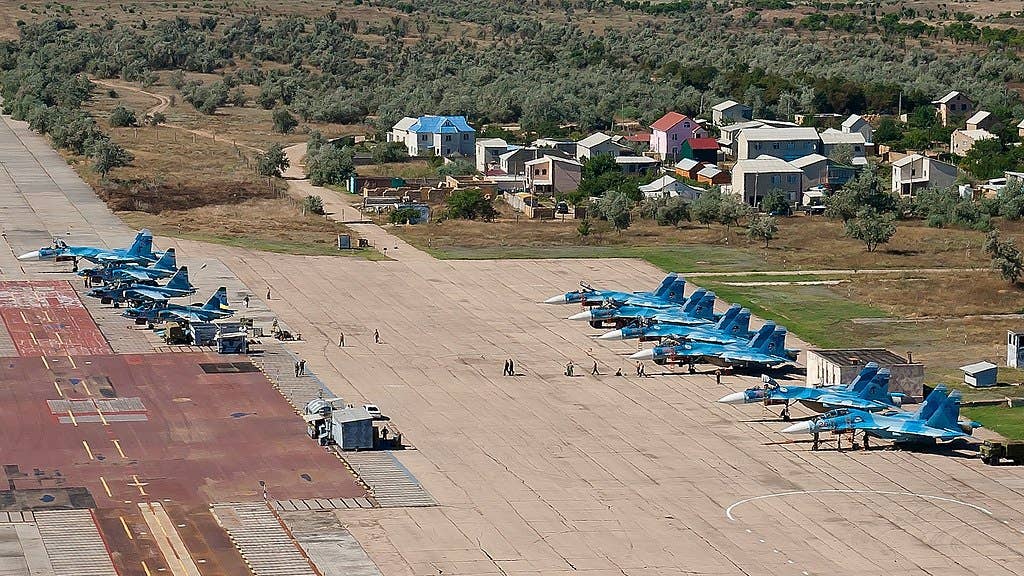Why Saki Airbase pilots are still at risk

Russian Naval Aviation aircraft at Novofedorovka airbase (Saki).
SUMMARY
The Crimean air base attack in late summer was a stunning display of Ukrainian martial prowess in the 21st Century. Massive explosions created towers of fire and smoke that rose hundreds of feet in the air at Saki Airbase, making the attack plain for all to see. Speculation continues as to the cause.
The base is near a popular beach area for Russian citizens, ensuring that dozens of Russian-speaking videos would come out. And the Saki Airbase attack destroyed nine planes, according to Ukrainian armed forces and many open source intelligence analysts, such as Oryx.
That would make the attack the worst day for Russian aviation losses since World War II. A CNN analysis puts the number slightly lower, at seven.
The attack marked a potential shift in Ukraine’s conduct of the war. The attack in Crimea weakened Russian naval capabilities in the Black Sea, terrified Russian citizens on vacation, and is Ukraine’s first large operation on the peninsula since it was captured by Russia in 2014.
Russia eventually conceded it had lost some personnel, even though it had initially claimed that no personnel, ammunition, or aircraft were lost in the attack.
Continuing Risk
But the Russian pilots stationed at the airbase aren’t out of the woods yet. AFuzion CEO Vance Hilderman’s company works with aviation companies on safety, certification, and compliance, and he says there are risks to the pilots flying the planes that survived.
“I would guess, judging from the photos, there are another five or six aircraft temporarily disabled, you know, but Russia will have them fly even if they’re not safe. Russia just goes for it.”
The risks wouldn’t necessarily stop an aircraft from taking off, as electronics and the engines would likely work.
“I’d be more concerned with the electronics,” Hilderman said. “But when the electronics are off, they’re not that susceptible [to blasts]. Probably, those aircraft were not powered on at the time of the blast. And Russian engines are really robust. They’re not efficient, and they have a high maintenance rate because of the lesser materials they use for steel metallurgy. But they’re really robust. The joke is you can put barbed wire in the engines and run on kerosene and they almost work.”
Mitigation
Instead, the risks would come while the planes are maneuvering. Hilderman said he would avoid certain types of maneuvers in planes that suffered such blast, heat, and debris risks as those at Saki Airbase, saying they would be dangerous to fly at high speeds or low altitudes.
“I wouldn’t go in as low. Low, you have the ground effect. You need a lot more control, a lot more attention. I would go slower and avoid dramatic turns.”
Naval aviators assigned to the base will struggle as Russia appears unable to control the skies over Ukraine, forcing its pilots to conduct many missions as low as possible and at high speeds to avoid Ukrainian air defenses.
But if the Russians are careful with the jets and get them intense, depot-level maintenance, they will be repairable. Russian aviation is currently struggling with a shortage of spare parts and materials, according to Business Insider, though it isn’t apparent from outside Russia how much those shortages are affecting military aviation maintenance.
SHARE
